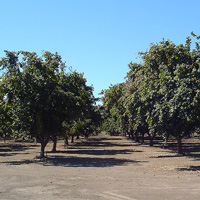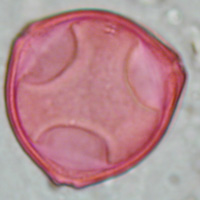
While the first day of spring doesn’t arrive until March 20, by February we’re already beginning to see tree pollens floating through the air here, in Eugene. One of the most prevalent pollens this time of year comes from the hazelnut tree, also known as the filbert tree.
In most parts of the country, tree pollen season lasts from March until May, but in the west, due to warmer winter temperatures, our tree pollen season starts as early as February and can last until June. A pollen allergy is seasonal, so knowing when specific pollens will be at their peak can be helpful in treating and avoiding reactions.
Hazelnut pollen develops in the late summer, over-winters, matures and is released in late winter or early spring. It is the earliest blooming tree, causing early onset of allergic symptoms.
Common allergic rhinitis symptoms include:
• Itching in the nose, roof of the mouth, throat, and eyes
• Sneezing
• Stuffy nose (congestion)
• Runny nose
• Tearing eyes
• Dark circles under the eyes
These symptoms are not only annoying, but also can affect day-to-day activities and worsen asthma symptoms. In addition to the pollen causing inhalant allergies, hazelnuts are also a common cause of food allergy.
Allergy symptoms and quality of life
Nasal allergy symptoms may affect sleeping and performance at work or school, as well as interfere with recreational activities. Many patients remain indoors avoiding allergen exposure while missing fun outdoor events affecting the overall quality of life. Decreased performance in school and work can also affect individuals suffering from seasonal allergy symptoms. Those with severe allergic symptoms can experience fatigue, mood swings, and lack of concentration, which can have a big impact on work, school and exercise.
Filbert facts
These deciduous trees (up to 75 feet tall) and shrubs (6 to 15 feet tall) are members of the birch family. Hazelnuts are produced in commercial quantities in Turkey, Italy and Greece. Turkey is, by far, the largest producer of hazelnuts in the world.
In North America, hazelnut production is concentrated in Oregon but they are also grown extensively just to the north, in British Columbia. In 1997, the in-shell production in Oregon was about 46,850 tons according to the Oregon Hazelnut Commission.
Oregon hazelnuts are grown across 30,000 acres by approximately 1,000 orchardists in the Willamette Valley, according to the American Society for Horticultural Science. Their annual production accounts for 3 to 5 percent of the world’s hazelnut tonnage. The trees are grown in a single trunk system with an average spacing of 20 feet. Mechanical harvesting usually happens in October. Pollination occurs in late January and lasts through February.
The name filbert is the correct name for the tree and nut. The name is of French origin and the tree was likely first introduced in Oregon by early French settlers. Hazelnut is the name coined by the English, and it was applied to the native species by early settlers. Hazelnut is more commonly used in marketing channels. In 1981, the Oregon Filbert Commission decided to conform to the common standard and began emphasizing “hazelnut.”

Filbert tree pollen grain
Pollen counts and monitoring
Oregon Allergy Associates, a division of Oak Street Medical, has performed pollen counts for the last 30 years. The current count can be viewed on our homepage, as well as on the American Academy of Allergy, Asthma and Immunology website. Being aware of the current pollen count can help you guage your level of outdoor activity. We are proud contributors to the National Allergy Bureau, which will be the topic of an upcoming blog.
Diagnosis
Not everyone is prone to tree pollen allergies. If your family has a history of allergies or asthma, there is a chance that you might be susceptible. If you are unsure of your family history, a simple skin test is a good way to find out what allergies you may have and their severity. Once specific allergens are diagnosed, your allergist will work with you to develop a plan to avoid allergens that trigger your symptoms.
Treatment and avoidance
For allergies, such as pollen, you can lessen symptoms by limiting outdoor activities during times of high pollen counts. Medication may be prescribed once a tree allergy is diagnosed. Immunotherapy (allergy shots) is also a proven treatment approach that can provide long-term relief for many people suffering from a tree allergy. Contact us to learn more.
 (541) 233-4064
(541) 233-4064 
